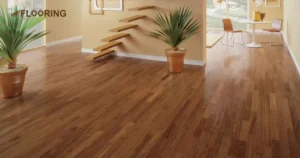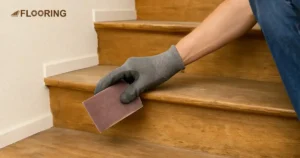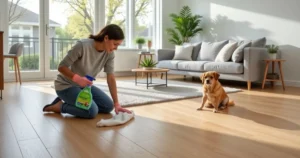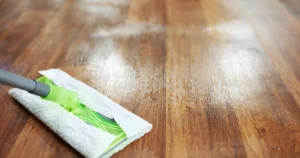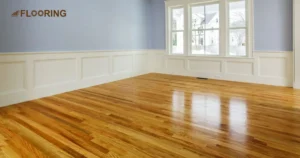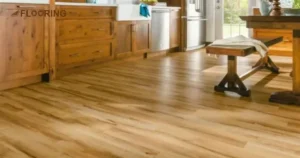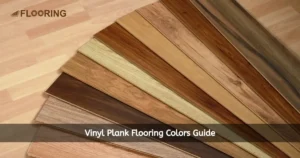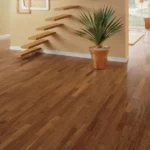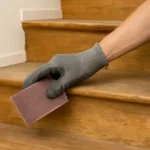Choosing the right vinyl plank flooring color is one of the most important steps when designing a home. The color you select does more than cover the floor. It sets the overall mood of the space, highlights your furniture, and even influences how large or small a room feels.
Luxury vinyl plank colors are especially versatile because they can mimic natural wood or stone while giving you the durability of vinyl. Picking the right shade can improve your home’s resale value and create a seamless connection between flooring, cabinets, and décor.
This guide walks you through a complete LVP color chart, the most popular styles, and practical tips to match vinyl flooring colors with cabinets, furniture, and room layouts.
📑 Quick Overview of Vinyl Plank Flooring Colors
Why Color Matters in Vinyl Flooring
The color of your vinyl flooring does more than just cover the ground beneath your feet. It sets the tone of the room, shapes how the space feels, and ties the design together. The right choice creates comfort and harmony, while the wrong one can make everything feel out of place.
Light vs. Dark Spaces
Light vinyl flooring opens up smaller rooms, making them feel larger, brighter, and more inviting. It works especially well in kitchens, hallways, and bathrooms where natural light may be limited.
Dark flooring creates depth and a dramatic look, ideal for living rooms or bedrooms where you want warmth and coziness. Medium tones strike a balance, offering flexibility that fits almost any style of home.
Matching Flooring with Existing Décor
Your flooring color also needs to work with cabinets, walls, and furniture. A mismatched shade can feel distracting and disconnected, while the right choice blends everything into a seamless design.
Light floors pair nicely with darker furniture for contrast, while mid and dark tones complement lighter cabinets or walls. The goal is to create balance so the room feels unified and easy to enjoy.
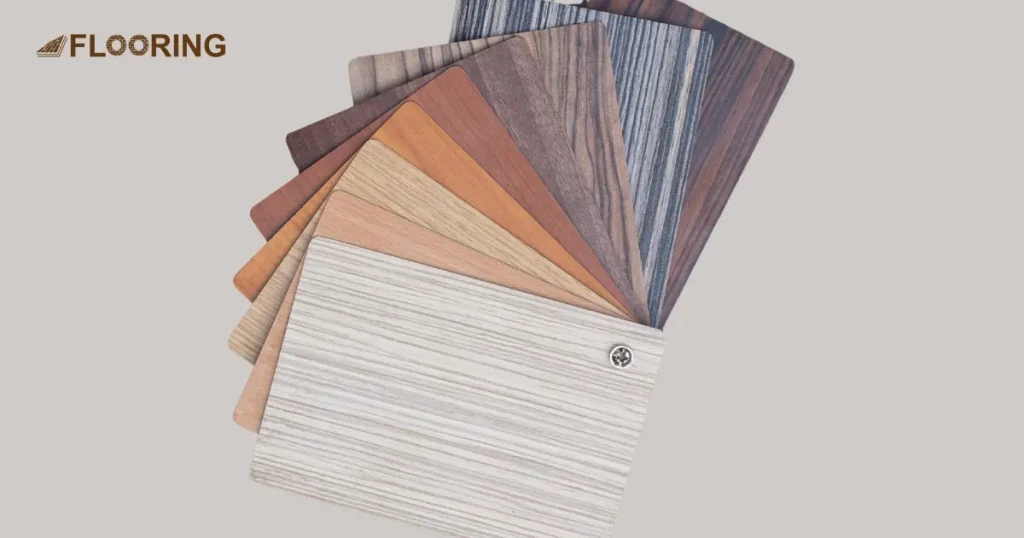
Vinyl Flooring Color Categories
Vinyl plank flooring comes in a wide range of shades that can completely change how a room looks. Whether you prefer a bright and airy feel, a balanced and classic style, or a bold and cozy mood, there’s a color option to fit your home. Below are the three main categories to help guide your choice.
Light Vinyl Plank Colors
Light colors like white, beige, and soft gray make small rooms feel larger and more open. These shades reflect natural light, creating a bright and fresh atmosphere that works especially well in kitchens, bathrooms, and modern spaces.
Lighter floors can make a small room feel expansive, but they need the right vertical contrast. Selecting the proper wall paint for light wood finishes prevents the room from looking washed out.
Medium-Toned Vinyl Plank Colors
Medium shades such as oak, natural wood looks, and mid-gray are the most versatile options. They provide a balanced style that works with almost any cabinet or wall color, which makes them popular for open-concept homes.
Medium tones also strike a nice middle ground, offering both warmth and brightness without overpowering the space.
Dark Vinyl Plank Colors
Dark colors like espresso, black, and deep gray create a rich, dramatic effect that feels cozy and elegant. These shades work well in larger rooms where you want a warm and grounded design.
However, dark flooring can show dust, scratches, and pet hair more easily, so regular cleaning is important to keep them looking their best.
If you ever deal with stubborn adhesive marks, check our detailed guide on how to remove glue from vinyl flooring for safe cleaning tips.
Popular Vinyl Plank Flooring Styles by Color
Vinyl plank flooring comes in many styles that copy the beauty of natural wood or stone. These designs give homes the look of luxury floors without the price or constant upkeep. With so many color choices, it’s easy to match your flooring to your personal taste. Some styles feel timeless, while others highlight the latest home décor trends loved by many homeowners.
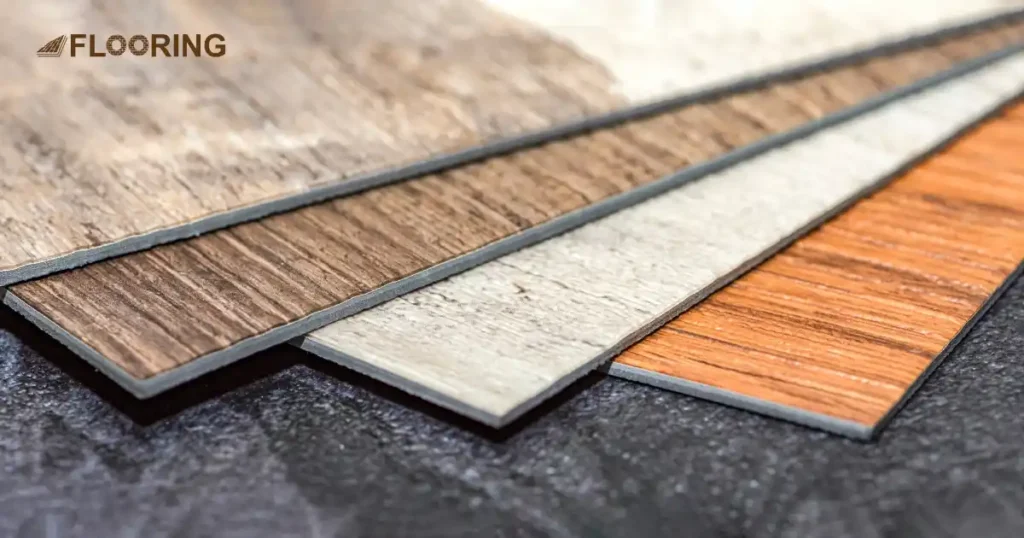
Wood-Look Vinyl Colors
Wood-look vinyl is one of the most popular options because it offers warmth and character. It mimics hardwood yet stays waterproof, durable, and more affordable than real wood flooring. Each wood type brings its own mood, making it easy to match your style.
- Oak Vinyl Plank – Light, neutral shades that brighten rooms and create a modern, welcoming look.
- Maple Vinyl Plank – Soft tones with smooth textures that add clean elegance and keep spaces simple.
- Walnut Vinyl Plank – Rich browns that feel warm, traditional, and perfect for cozy living areas.
- Hickory Vinyl Plank – Bold grain with strong contrasts that add rustic charm and farmhouse personality.
Stone-Look Vinyl Colors
Stone-look vinyl brings the elegance of natural stone without the heavy cost or tough maintenance. It works well in kitchens, bathrooms, and entryways where people want a refined style. Different stone looks give either a bold, dramatic feeling or a warm, earthy comfort.
- Marble Vinyl Plank – White and gray tones that deliver timeless elegance and a polished, upscale touch.
- Slate Vinyl Plank – Dark shades that add depth, style, and a bold statement to modern homes.
- Travertine Vinyl Plank – Beige and cream hues that feel soft, natural, and welcoming in everyday spaces.
Trending Vinyl Flooring Shades
Trending shades in vinyl flooring are popular because they blend modern style with easy comfort. They often fit a wide range of home décor choices, from casual to more formal. Many homeowners choose these shades to keep their interiors fresh, stylish, and long-lasting.
- Greige Vinyl Plank – A balanced mix of gray and beige that works with almost any design style.
- Weathered Wood Vinyl Plank – A rustic look with natural texture that feels authentic in farmhouse settings.
- Whitewashed Vinyl Plank – Light, coastal-inspired tones that brighten spaces and give rooms an airy mood.
If you prefer a bold and modern aesthetic, consider high contrast designs. Many interior styles now focus on pairing ebony furniture with pale timber floors to create a dramatic visual impact.
Coloring Guide Table for Vinyl Flooring (Visual Guide)
If you’re choosing a vinyl plank flooring color, a clear visual guide can make the decision easier. Here’s a simple color table that highlights common vinyl plank shades and their best-suited interior styles.
| Vinyl Flooring Color | Best For | Design Vibe | Room Suitability |
| Light Oak | Small spaces or rooms with limited light | Airy, modern, and minimal | Bedrooms, living rooms |
| Gray | Neutral base for any décor | Contemporary, cool, and sleek | Kitchens, bathrooms |
| Walnut | Adds depth and contrast | Traditional and warm | Dining areas, hallways |
| Whitewashed | Coastal or Scandinavian interiors | Relaxed and clean | Entryways, studios |
| Espresso | Creates luxury and drama | Classic and elegant | Living rooms, offices |
| Natural Maple | Brightens dark spaces | Fresh and inviting | Kitchens, open layouts |
For a more comprehensive visual reference, you can check this official Armstrong Flooring Color Guide (PDF). It includes real vinyl sheet color samples, style inspirations, and coordination ideas perfect for homeowners looking to compare tones before making a final choice.
Choosing the Right Vinyl Flooring Color
Selecting the right vinyl flooring shade is not just about style. It is about creating harmony between your cabinets, furniture, room size, and lighting. A thoughtful choice can make your home feel balanced and inviting while adding long-term value. Let’s break it down step by step.
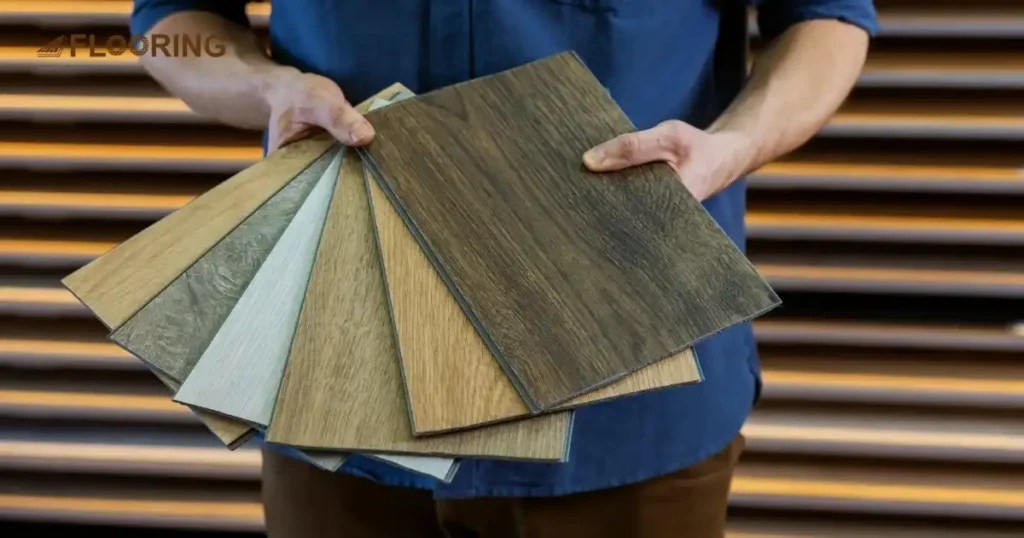
Based on Cabinet Colors
The shade of your cabinets guides the right vinyl floor color. Contrast adds energy, while complementing tones bring harmony. A smart match creates a balanced kitchen or living space.
- Dark Cabinets: Pair with light vinyl floors to create contrast and brighten the room.
- White Cabinets: Medium or dark floors help prevent a washed-out look and add depth.
- Wood Cabinets: Match with complementary tones for a natural feel or go contrasting for drama.
Your flooring does not exist in a vacuum. It must work with your existing fixed elements, so take time to coordinate your kitchen joinery and wood flooring tones for a cohesive look.
Based on Room Size & Lighting
Room size and natural light often decide how flooring colors appear. Light shades open spaces, while darker ones add warmth. Picking carefully makes rooms more comfortable and balanced.
- Small Rooms: Light shades like beige or pale gray make the space feel open and airy.
- Large Rooms: Dark or medium floors add warmth and coziness without shrinking the room.
- Low Light Spaces: Stick with mid-tones to balance brightness without showing dirt easily.
Based on Home Style
Your home’s style should guide your vinyl color choice. Matching flooring with your theme creates unity. The right shade reinforces personality and adds value to your space.
- Farmhouse Style: Weathered wood, greige, or whitewashed planks enhance rustic charm.
- Modern Homes: Sleek mid-gray or espresso shades work best for a contemporary edge.
- Luxury Interiors: Marble-look or deep walnut tones elevate elegance and resale appeal.
A balanced layout enhances how colors appear once installed. Read how to stagger vinyl plank flooring for step-by-step pattern guidance.
Dark vs Light Vinyl Plank Flooring Colors
Dark and light vinyl floors both have strong appeal, but they create very different effects. Choosing between them depends on your home style, lighting, and maintenance needs. Take time to weigh the pros and cons before deciding.
Use this guide to compare both options side by side and pick the best fit for your space.
| Feature | Dark Vinyl Plank Flooring | Light Vinyl Plank Flooring |
| Room Feel | Creates cozy, dramatic spaces with bold character. | Makes rooms feel larger, open, and airy. |
| Design Style | Works well in luxury, rustic, or dramatic interiors. | Fits modern, minimal, and casual farmhouse styles. |
| Cabinet Matching | Best with white or light-colored cabinets. | Best with dark or wood-toned cabinets. |
| Maintenance | Shows dust, dirt, and scratches more easily. | Hides dust better but may show stains over time. |
| Lighting Needs | Performs best in bright, well-lit spaces. | Ideal for small or low-light rooms. |
| Resale Appeal | High-end buyers often prefer rich, dark flooring. | Widely appealing, especially for modern buyers. |
Light vinyl floors feel modern and airy, while dark tones add warmth and depth. Choose based on your room size, cabinet colors, and maintenance style. If your home has mixed materials, using a clean tile to vinyl transition helps maintain color balance and visual flow between rooms.
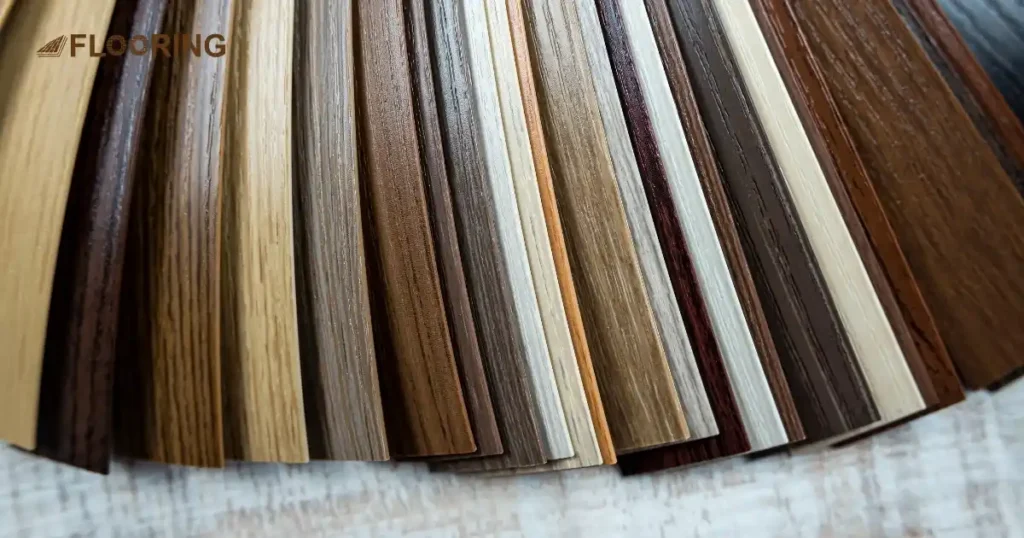
Final Thoughts on Vinyl Plank Flooring Colors
Choosing the right vinyl plank flooring color is more than a style decision. The shade you pick shapes how your rooms feel, how furniture blends, and even how much value your home holds. From airy light tones to bold dark shades, every color has its place.
Think about your cabinets, lighting, and room size before making the final call. Use color charts and side-by-side comparisons to avoid second guesses.
👉 Save this guide for later or share it with friends who are planning a flooring upgrade. A thoughtful choice today means flooring you’ll enjoy for years to come.
What People Ask About Vinyl Colors
What color luxury vinyl plank flooring is in for 2025?
Greige, warm neutral tones and honeyed wood hues are trending in 2025. Designers are moving away from cold grays and toward warmer, natural palettes. These shades bring a cozy yet versatile backdrop for modern homes.
What is the most popular color of vinyl flooring?
Neutral tones like light oak, beige, and gray currently dominate. Gray is especially popular due to its minimalist, clean appeal. These neutrals adapt easily to various décor styles and color schemes.
What color vinyl planks make a room look bigger?
Lighter shades like pale beige, white oak, or soft gray help open up small rooms. They reflect more light and give an airy feel. Use lighter tones in narrow spaces or rooms with limited windows.
Does LVP look better in light or dark shades?
Both can look beautiful depending on your design goals and lighting. Light shades make rooms seem larger and brighter. Dark shades add warmth, depth, and a dramatic effect.
Can I change the vinyl flooring color later?
Not really, color is part of the vinyl material, so you can’t repaint it. You’d need to replace the planks or overlay them with new ones. Always test samples before buying to avoid regrets.

